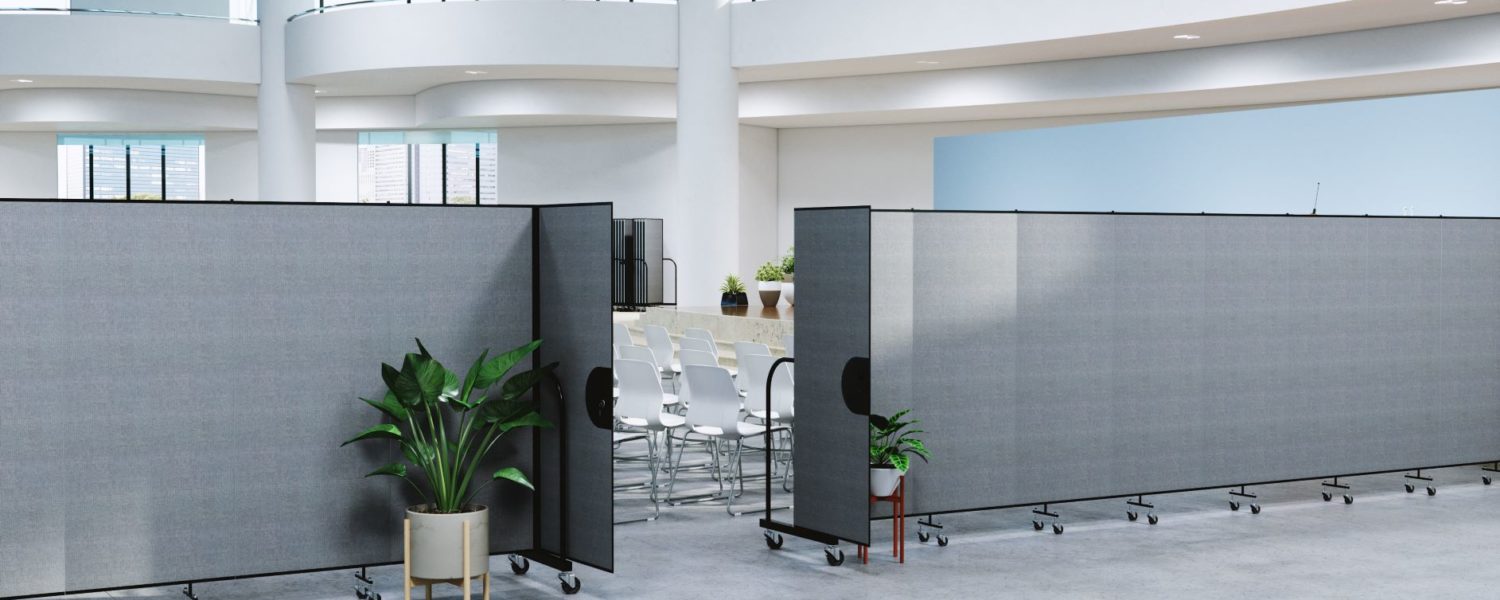By Katie Albrecht
Since the world is at a challenging time with sickness, job loss, and grief running rampant, churches are needed more than ever. Many people look to their local church as a form of solace and community, and without it, they can suffer greatly.
Although video streams of Sunday Mass and prayer services were a decent alternative, it’s safe to say churchgoers are excited to get back to their proper place of worship.
In the age of wearing masks and social distancing, church leaders around the United States have been exploring how to reopen appropriately.
The question is, how do they do it safely while containing the spread of COVID-19?
Here are some ways religious leaders are using room dividers to help limit germs from spreading and ultimately get their congregants back to their services.
Clear Barriers in Front of Pastor
Since the Coronavirus mainly spreads through respiratory droplets in the air, physical barriers between people can help minimize the contagion.
During a Sunday Service, the pastor and other presenters can quickly spread their germs as they project their voices to a large crowd. In this scenario, masks may prohibit them from articulating clearly, even with a microphone.
As an alternative, these church leaders should place clear plexiglass dividers in front of their podiums. Many plexiglass options could work for this situation.
However, a freestanding clear room divider would allow for the most flexibility, especially on a stage.
Using a plexiglass divider, preachers can contain most of their germs to a small area, and the crowd can still see and hear them. Transparent acrylic material also easily cleans in between each use.
Limit Sunday School Class Sizes
It’s no secret that kids can carry and spread germs when they are in large groups. For this reason, a concern of churches reopening is how to carry out Sunday School classes.
As a solution, limiting class sizes can help minimize contagion. One tactic in particular includes staggering the classes, so fewer kids come in at once.
In addition to changing class times, Sunday school teachers can use portable walls. Moveable dividers can create multiple smaller classrooms out of a larger one, safely allowing several classes to occur at once. Some dividers even have sound-absorbing technology, which minimizes auditory distractions from either side.
By utilizing a divider that moves easily, you can also tuck it in storage and reuse it another time.
Overflow Room for High Traffic Times
During Christmas, Easter, and other high-traffic times of the year, service attendee numbers can double or triple in size. Since social distancing doesn’t seem to be leaving before Christmas this year, there still needs to be a limited amount of people at these services.
To allow as many people as possible into the church in such a busy season, create an overflow seating area/room using room dividers.
Using partitions, church leaders can section off a multipurpose room in their facility and allow a small number of people to sit in there while remaining socially distant from each other. Use a projector for the overflow area to easily view the service.
Not everyone will be immediately comfortable returning in person, but church leaders can still offer streaming services to include them.
Reusable Post-Pandemic Dividers
When the pandemic is under control, and we can gather in large groups again, room dividers can still come in handy. Dividers have been used in churches for decades now.
When space is limited, partitions help split up larger multipurpose rooms for most ministries, weddings, or baby showers. Some dividers even have tackable fabric, perfect for displaying art or holiday decorations.
In the case of new member growth, room dividers can help ensure that there’s enough space for holding sizeable gatherings.
By utilizing portable partitions, churches can create versatility in their facility for any growth or social distancing need.
Katie Albrecht is the marketing coordinator for Screenflex Portable Partitions, the leading manufacturer of portable room dividers for over 30 years, www.screenflex.com.





















